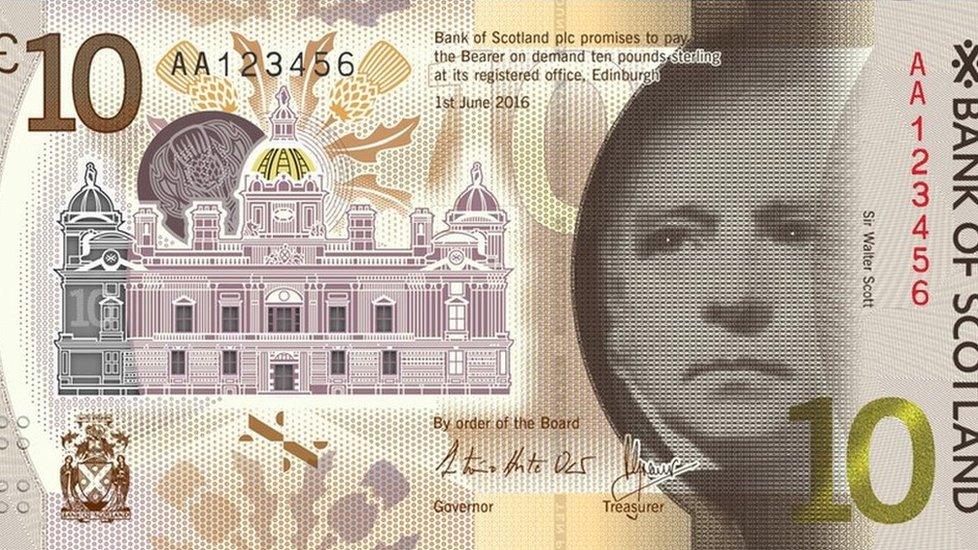Jane Austen polymer £10 note enters circulation
- Published

Bank of England governor Mark Carney with the new note
The new £10 note featuring novelist Jane Austen has entered circulation - marking a return of a woman in addition to the Queen on Bank of England notes.
The launch comes after a four-month period when women, apart from the Queen, have not been represented on the Bank's notes.
The last was the £5 note featuring reformer Elizabeth Fry which was replaced by a Winston Churchill fiver.
The new £10 note is made of polymer and includes raised dots for blind people.
It replaces the paper £10 note, with the portrait of naturalist Charles Darwin, which will still be accepted in the shops until Spring 2018. The exact date of withdrawal will be published three months in advance.
"Our banknotes serve as repositories of the country's collective memory, promoting awareness of the UK's glorious history and highlighting the contributions of its greatest citizens," said Bank of England governor Mark Carney.
"The new £10 note celebrates Jane Austen's work. Austen's novels have a universal appeal and speak as powerfully today as they did when they were first published," he said.
Scottish banknotes can be issued by a number of banks. They will launch their new £10 notes into circulation in the coming weeks.
The representation of women has continued on Scottish notes, with doctor and suffragist Elsie Inglis still the face of Clydesdale Bank's £50 note and writer Nan Shepherd on the RBS polymer £5 note.

One billion polymer Jane Austen £10 notes have been printed and will be fed into general circulation over the coming weeks and months.
The Bank said polymer, also used with the new fiver, was more durable and cleaner than paper notes. It has persevered with this, despite complaints from religious and vegan groups that the animal fat tallow is used in the production process.
Following consultation, the Bank said in August that it would continue with the use of tallow in future banknotes - saying that it "has not taken this decision lightly".
The Bank assessed whether palm oil or coconut oil should be used instead, but concluded that this might not be able to be sourced sustainably and changing production would also involve considerable extra costs to taxpayers.

Security features of new £10 note:
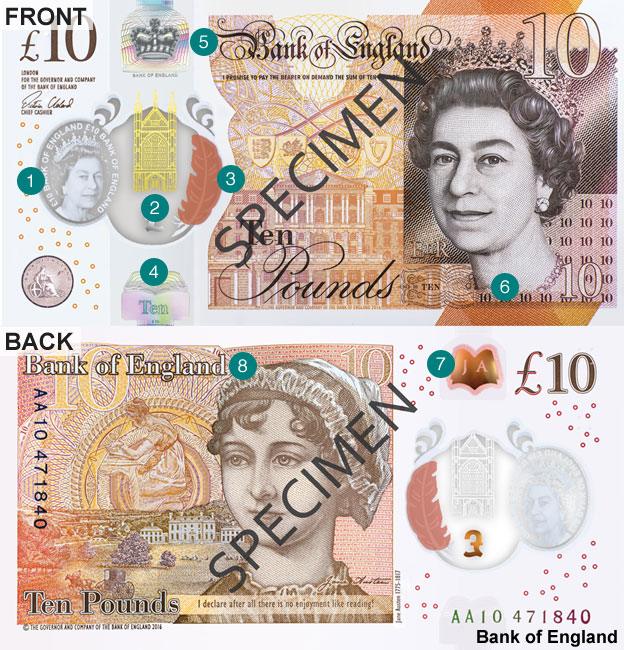
A see-through window featuring the Queen's portrait
Winchester Cathedral shown in gold foil on the front of the note and silver on the back
A quill at the side of the window which changes from purple to orange
A hologram which contains the word "Ten" and changes to "Pounds" when the note is tilted
A hologram of the coronation crown which appears 3D and multi-coloured when the note is tilted
Micro-lettering beneath the Queen's portrait with tiny letters and numbers that are visible under a microscope
A book-shaped copper foil patch which contains the letters JA
The words "Bank of England" printed in intaglio (raised ink) along the top of the note

On the front of the new note is the portrait of the Queen as well as Winchester Cathedral, Jane Austen's final resting place, in gold-coloured foil over a see-through window.
In the top left corner, two clusters of bumps are on the plastic to allow blind and partially-sighted people to feel which note it is.
This is the first time such a feature has been used on banknotes in the UK. It has been used before on Australian and Canadian banknotes.
On the reverse of the note is Jane Austen's portrait with a quotation from her best known work, Pride and Prejudice, which says: "I declare after all there is no enjoyment like reading." The line is from a character called Caroline Bingley who, in fact, has no interest in books and is merely trying to impress Mr Darcy, a potential suitor.
Jane Austen "would have been gobsmacked" by the new £2 coin and £10 note says biographer
One investment company has calculated that £10 from 1817 - when Jane Austen died - equates to roughly £786, in today's money.
Ritu Vohora, investment director at M&G Investments, said: "Jane Austen lived through the Napoleonic Wars, yet despite all the political upheaval - cash remained king."
A new polymer £20 featuring artist JMW Turner is due to be issued by the Bank of England in 2020, but there are no plans to replace the current £50 note, which was released in 2011.

- Published10 August 2017
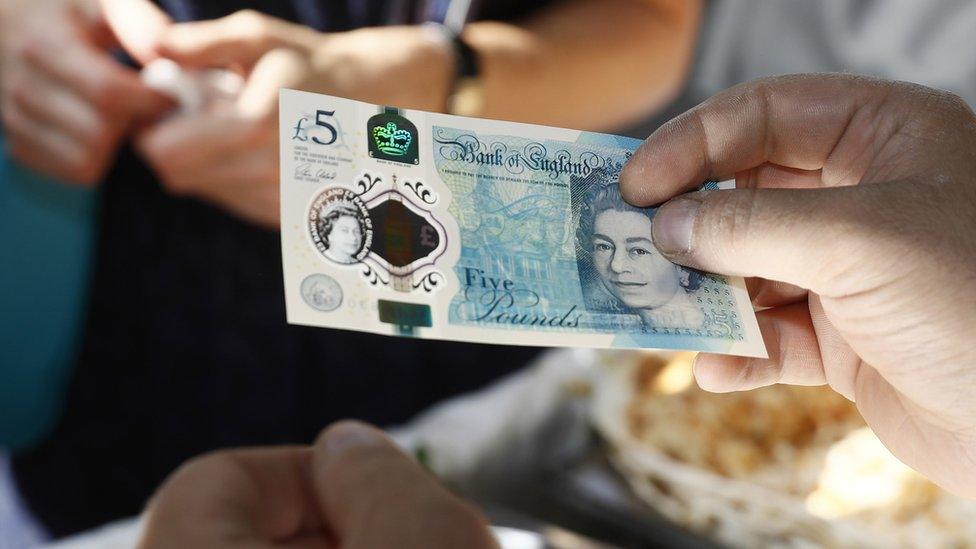
- Published22 September 2016
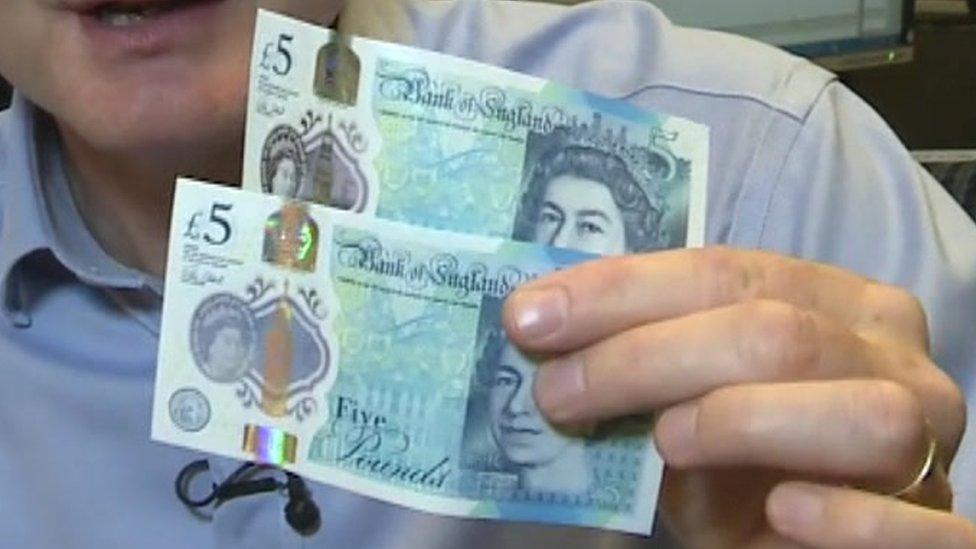
- Published18 July 2017
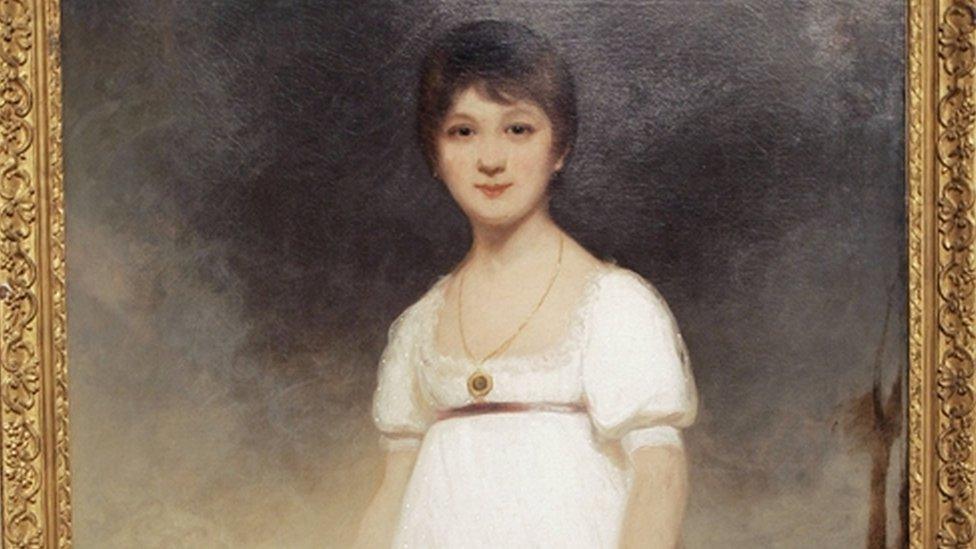
- Published29 May 2017
